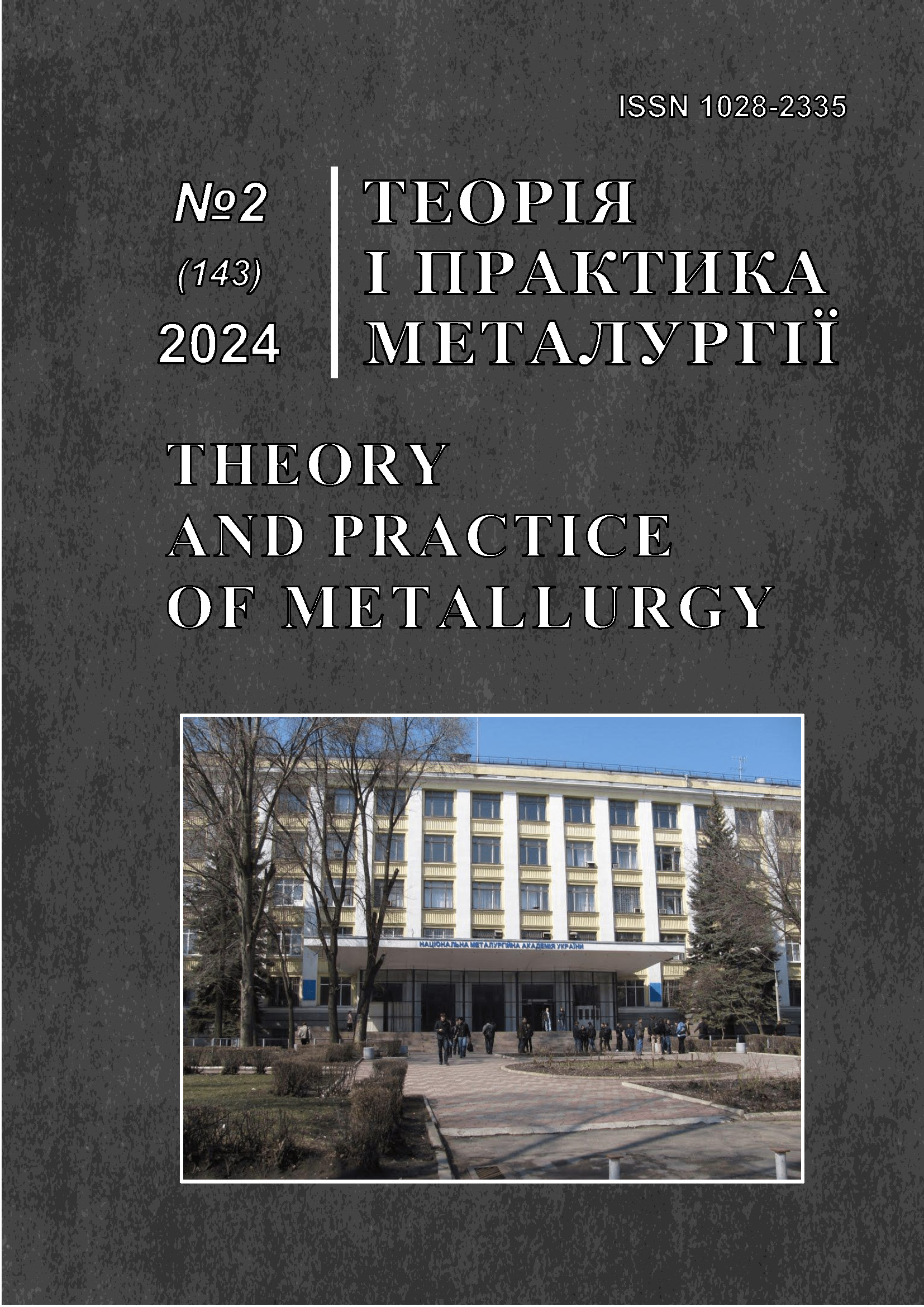Modeling new processes for preparing sleeves before rolling
DOI:
https://doi.org/10.15802/tpm.2.2024.03Keywords:
modeling, pipe, sleeve, mandrel, pilgrim mill, off-mill charging, sliding line method, heterogeneity, charging force, crimping press, charging pressAbstract
The purpose of this work is to develop new technological processes for preparing the ends of sleeves on a mandrel before rolling on a pilgrim tube rolling mill. Methodology. The work solves the problem of preparing the ends of the sleeves in the line for loading mandrels into them, which is carried out on the operating section of the pilgrim mill. Findings. To determine the energy-power parameters of the loading press force during the preparation of the rear end of the sleeve, the sliding line method was used, with the help of which changes in the force of distributing the rear end of the sleeve by the conical belt of the mandrel were calculated, taking into account the depth of its insertion. Originality. This allows you to determine the working length of the conical mandrel belt with its selected taper, taking into account the capabilities of the hydraulic cylinder of the filling press. Practical value. The proposed technology for preparing the ends of sleeves on the mandrel before pilgrim rolling allows reducing the unevenness of sleeves and pipes due to the concentric arrangement of the sleeve on the mandrel during the rolling process.
References
Kozlovskii, A. I., Balakin, V. F., & Ugriumov, Iu. D. (2012). Sostoianie i perspektivy razvitiia protsessa go-riachei piligrimovoi prokatki trub. Chernaia metallurgiia: Biulleten NTI “Chermetinformatsiia”, 7, 82-90. https://nmetau.edu.ua/file/byulleten_chernaya_metallurgiya__no__7.pdf
Danilov, A. F., Gleiberg, A. Z., & Balakin, V. G. (1972). Goriachaia prokatka i pressovanie trub. Metallurgiia
Cherniavskii, A. A., Berezovskii, V. V., & Ugriumov, IU. D. (1987). Ekonomiia metalla pri proizvodstve trub neftianogo sortametnta. Metallurgiia
Kozhevnikov, S. N., Prazdnikov, A. V. et al (1974). Oborudovanie tsekhov s piligrimovymi truboprokatnymi ustanovkami. Metallurgiia
Stepanenko O. M., Dobriak V. D., Hubynskyi M. V., & Uhriumov Yu. D. (2016). Prystrii dlia ochyshchennia vnutrishnoi poverkhni hariachykh trubnykh zahotovok (hilz). (Patent No. 109104). Ukrpatent. https://sis.nipo.gov.ua/uk/search/detail/831829/
Stasevskyi S. L., Dobriak V. D., Uhriumov Yu. D., & Uhriumov Yu. D. (2016). Sposib nanesennia dezoksydanta na vnutrishniu poverkhniu hariachykh vyrobiv typu hilz. (Patent No. 112735). Ukrpatent. https://sis.nipo.gov.ua/uk/search/detail/820686/
Balakin V. A., Stasevsky S. L., Dobrijak V. D., & Ugriumov Y. D. (2022). Improved hot pilger tube rolling by controlling the clearance between the sleeve and the dorn. Fundamental and applied problems of ferrous metallurgy, 30, 245-256. https://jrn.isi.gov.ua/wp-content/uploads/2022/04/sb2015_30.pdf
Stasevskii S. L., Ugriumov Iu. D., Garmashov D. Iu., & Ksenz A. A. (2013). Puti umensheniia tekhnologicheskoi obrezi na piligrimovom stane. Visnyk Natsionalnoho tekhnichnoho universytetu “KhPI”. Seriia: Novi rishennia v suchasnykh tekhnolohiiakh, (43(1016)), 211-219. http://library.kpi.kharkov.ua/files/Vestniki/2013_43.pdf
Balakin V. A., Stasevskii S. L., Ugriumov Iu. D., & Dobrijak V. D. (2018). Improving the preparation of the liner for rolling on the pilger mill. Metallurgical and mining industry, (4), 39-44. https://www.metaljournal.com.ua/assets/Journal/Balakin.pdf
Balakin V. F., Ugriumov Iu .D., & Ugriumov D. Iu. (2012). Puti snizheniia massy pilgergolovki pri goriachei prokatke trub. Theory and Practice of Metallurgy, (1-2), 32-36.
Tomsen E., Iang Ch., & Kabaiashi Sh. (1969). Mekhanika plasticheskikh deformatsii pri obrabotke metallov. Mashinostroenie
Ziuzin V. I., Brovman M. Ia., & Melnikov A. F. (1969). Soprotivlenie deformatsii stalei pri goriachei prokatke. Metallurgiia
Downloads
Published
How to Cite
Issue
Section
License
Copyright (c) 2024 Bilodidenko S.V., Маzur І.А., Dobriak V.D., Uhriumov Yu.D., Uhriumov D.Yu.

This work is licensed under a Creative Commons Attribution 4.0 International License.
Authors retain copyright of the published papers and grant to the publisher the non-exclusive right to publish the article, to be cited as its original publisher in case of reuse, and to distribute it in all forms and media. Articles will be distributed under the Creative Commons Attribution 4.0 International (CC BY 4.0) licence.
Authors can enter the separate, additional contractual arrangements for non-exclusive distribution of the published paper (e.g., post it to an institutional repository or publish it in a book), with an acknowledgement of its initial publication in this journal.




